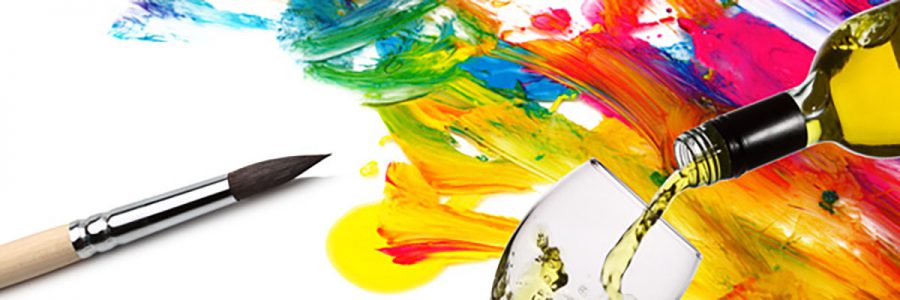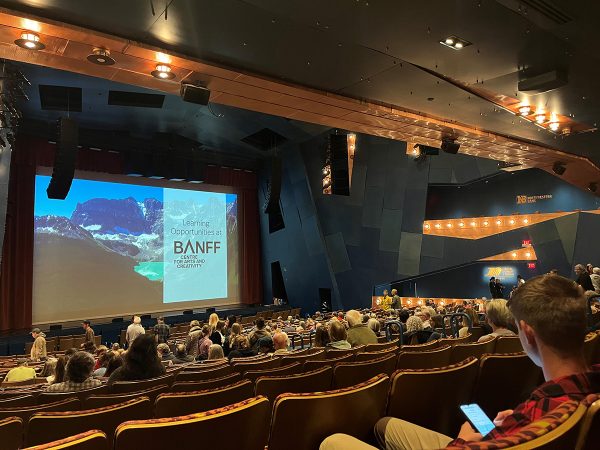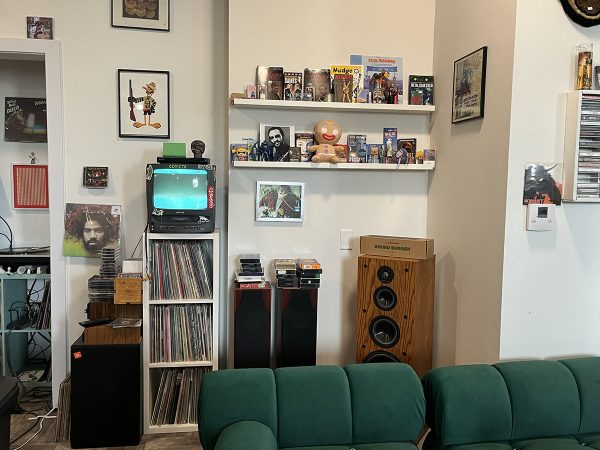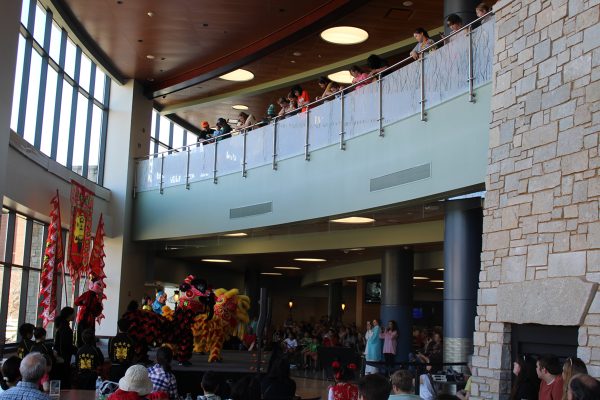Erasing the individualism that is quintessential to art
Paint-and-sip classes encourage creativity in those who don’t typically make art, stifles it in those who do
More stories from Alivia Kistler
Photo by Submitted
Paint-and-sip classes continue to rise in popularity.
In a welcoming art studio with walls covered with previously created projects, there are tables full of middle-aged moms getting together for their weekly night out, a bachelorette party and a couple on their second date. A bottle of wine sits at each table in between the soon-to-be painters who sip on their glasses.
Paint-and-sip classes bring what is considered a niche talent for certain people to a wider audience. An instructor leads the class and provides all of the materials the participants will need. Often a simple design with vibrant colors and a statement background will be the final piece for the classes to try to paint.
Many people attend these classes for different reasons and with different people, usually to bond with a group of friends to or have a party with the central theme of the painting class. The main target audiences is usually corporate coworkers after work or for moms on a night, or morning out with friends all with the goal of doing something out of the ordinary, according to Forbes Magazine.
Forbes also states there have been a few noteworthy locations, one called “Painting with a Twist,” which opened in New Orleans and “Pinot’s Palette” in Texas; these locations have been growing in popularity for a few years, and now both have more than 100 stores since opening.
The New York Times states this phenomenon has grown outside of the United States as there are now paint and sip classes in Abu Dhabi, London and Hong Kong. Also according to the Times, people are more happy purchasing an experience rather than an item, so the ability to make an art piece rather than buy one draws people to these classes.
I attended one of these classes in La Crosse, Wisconsin. These classes promote creativity for people who have never painted while allowing the veteran painters to show off their skills and experience.
They can be fun if the instructor prompts the painters to add their own twists to their pieces so they won’t all look identical at the end of the class. The added freedom would allow participants who don’t want to input their own ideas into the project to just follow along with the instructor while also letting those who want to think outside the box to do so.
In my experience, the people who attend these classes are people who consider themselves as generally lacking in artistic talent. This does not apply to everyone, but majority of the people in my life fit into this category. I can definitely see the appeal of these classes for people without previous experience in painting to want to try a new hobby.
I have painted many pieces on my own time, and I think classes that walk through a painting process are more fun for the people who do not take the time to buy their own supplies and paint a piece in solitude. My experience in the class prompted me to want to stretch the guidelines of the project and make mine look much different from everyone else’s while still having it look similar. The instructor did not push anyone to change the design she was showing.
Personally, I do not see the appeal and would rather attend a studio class without an instructor where every person is able to experiment with many new art mediums, not just paint. If the provided instructor would teach painting techniques, rather than step-by-step instructions to complete one piece, this would allow for the “students” to be able to take the techniques with them and maybe inspire them to buy some paint and a canvas and paint on their own time.
Art is meant to show individualism and while everyone’s unique style shows through the classes would be more enjoyable if a personalized subject would be an option to paint.











Steven Weber • Feb 19, 2018 at 5:08 pm
Alivia, as a Co-Founder of a Paint & Sip business ere in Western Wisconsin, I appreciate your candor. I was never told I could paint, the encouragement in school always went to those who had better fine motor skills as well as imagination. I’ve sold art and represented Artists for the better part three decades. about four years ago I saw photos of a Paint and Sip session in Milwaukee on my niece’s Facebook page. I said to my wife and Now Co-Founder of Paint Sip Nosh, “Now that’s something that’s really needed in today’s world”. So my wife and I attended a class for our Date Night. I found it relaxing, enjoyable, creative and fun. Everywhere I looked there were smiles. Within a about 10 months we were conducting Paint And Sip classes in Western WI and the Twin Cities Metro area. We eventually opened and subsequently closed a studio. We now conduct classes in local restaurants, community spaces, peoples homes and offices.
Most of us don’t have the skills or the guts to do this on their own. I have many friends who are Artists. Some feel as the writer, that it somehow stifles creativity. But, many have taken the position of “anything that stimulates creativity in people is a good thing.” There’s no numbers, no detention for getting up and talking, you don’t have to paint in between the lines. I’ve found that those with more confidence in their Art skills often depart from the subject being taught by our instructors.
Our mission is to get people to come together and get in touch with their creative side. We think of it as hitting “The Easy Button” because we do all the work. Guests can attend an event in their area or in the case of a group event, we can come to you. I wouldn’t have experienced all the smiles and happy faces of people gathering for a cause. These classes promote happiness, wellness, togetherness and artistic creativity. I love the look on people faces when they realize, I too can create Art. In today’s world, many of us get allot of screen time. In My Humble Opinion, gathering with friends and family in the world of Reality vs. Virtual Reality, creating a shared experience, memories, is a much better choice.
Stephen Weber
– Hudson WI
Alumni UWEC – 1970’s